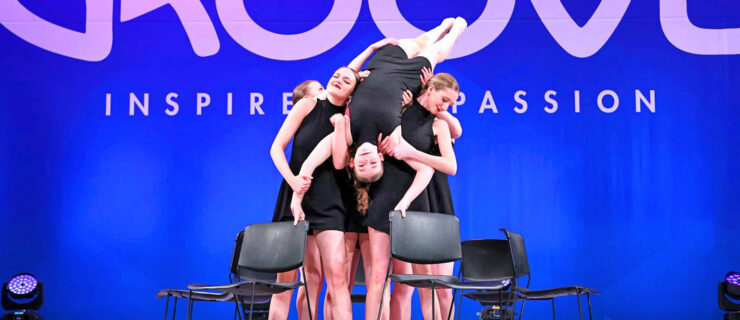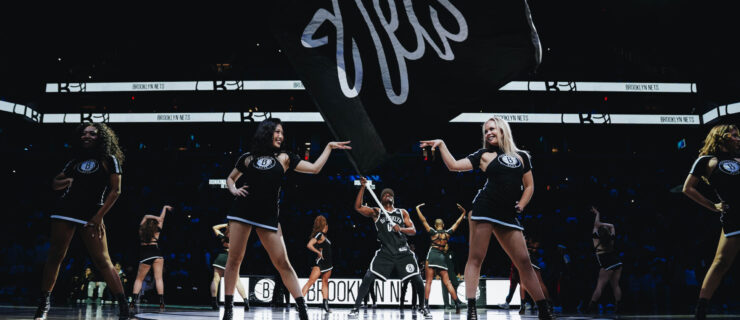Out of Africa: Jeffrey Page on West African Dance
From music videos to Broadway’s Fela!, the influence of West African dance seems to be more visible than ever. Dancer and choreographer Jeffrey Page created the first West African routine on “So You Think You Can Dance” in Season 5 and can currently be seen nightly in Fela! on Broadway. Page, an Indianapolis native who has worked with Beyoncé, Cirque du Soleil and Alvin Ailey American Dance Theater, has taken several trips to West Africa to research traditional dance and music in Senegal, Guinea and The Gambia. DS asked him to shed some light on the dance style and why it’s growing in popularity.
Dance Spirit: What does West African dance look like?
Jeffrey Page:
Each dance from the West African region has extremely different qualities. Some are light and airy, with the body and arms lifted; some involve turns and jumps, with a graceful, smooth roundedness; others are grounded, with the upper body bent over like you’re carrying something on your back.
DS: How are West African dance movements incorporated into Western dance styles and culture?
JP:
As Westerners, we feel African influence in jazz, gospel, blues, hip hop, rock and roll and so on. The roots of the lindy hop and Charleston are African: They’re down and funky, and the knees and legs are accentuated with high kicks and fancy footwork that is traditionally seen in Guinean dance styles. Even Cuban salsa has roots in Nigeria; it has the same footwork and patterns as ancient movements. Or watch the way Beyoncé moves her body with a pulsating rhythm—her movements are directly connected to West African dance. Her head rolls and hair whipping are seen a lot in the West African aesthetic. In my choreography for her “Déjà Vu” video, I used a move that’s done in Senegal where the hips shift from side to side in opposition to the knees going side to side. Beyoncé makes it look really funky.
DS: What separates West African dance from other regional African dance styles?
JP:
Some of the northern regions have a Muslim sensibility and influence, meaning the women are often more covered, the dancers may work with scarves and the movements have an elegant grace. The southern regions are completely different: The women may be bald, they usually show as much skin as possible and they often use face paints. Art is a reflection of life in each region, and Africa is a huge continent—we can’t lump it all together!
DS: Is there a place on the body from which many of the movements originate?
JP:
Everything is centered on the torso and initiates from the middle of the body. The torso generally hovers over the knees; it’s kind of like “first position.” I often see modern and ballet dancers fighting to pull up and stay in vertical alignment. But you should feel your chest and booty sticking out—basically everything you’re taught in West African dance is wrong in ballet!
DS: What are some of the common mistakes dancers make when learning West African dance?
JP:
The texture of the dances revolves around momentum. The movement rebounds from one movement to the next—it never stops. Other dance styles have poses and transitions, so the most difficult adjustment that classical dancers encounter when doing West African is finding a continuous flow of movement.
DS: How does drumming affect the movements and the rhythms?
JP:
The lead drummer sets the tempos and marks every movement with his rhythms and accents. Simply stated, the drummer plays a “break,” or a change in the musical pattern, to tell the dancer to stop, change or move on. But really, the dancers and drummers feed off each other. I create music with my body, the drums replicate my dance and we have an intense nonverbal conversation.
DS: Why do you think West African dance is gaining popularity in the U.S.?
JP:
I believe it is only our perception that West African dance is having a here-and-now moment, because it had a strong impact in the 1970s and ’80s as well. TV and the Internet have just made African dance more visible to wider audiences. Americans are starting to understand the beauty and relevance of West African art forms. Innately it is already inside our culture; Africa is interwoven in every piece of our identification, from music to urban clothing to movement.
DS: Why do you think West African dance is included in the “SYTYCD” lineup?
JP:
It tests the dancers’ minds and their willingness to try something new. Dancers today need to have a wide array of genres under their belts, even if the technique is uncomfortable or challenging. Beyond technique, learning new dance styles allows our minds to open, which makes us empathetic to all people and cultures around us.
DS: How did you approach your choreography for “SYTYCD?”
JP:
Choreographing a five-minute piece on dancers without African training is like teaching street kids Swan Lake and expecting them to perform it that week. In Season 5, I came in with choreographic plans, but when I got into the five hours of rehearsal, I had to throw everything out and start over. It was so hard!
DS: How does it feel to perform West African dance on Broadway?
JP:
Every night in Fela! I get immediate gratification from the audience’s response. I see people from all different cultures with tears in their eyes from the joy of the experience. I realize that people are open to connecting with different worlds and cultures, open to experiences beyond their own.



